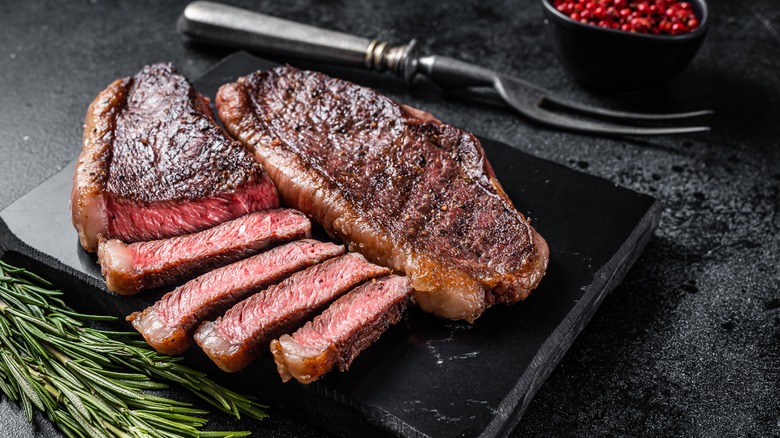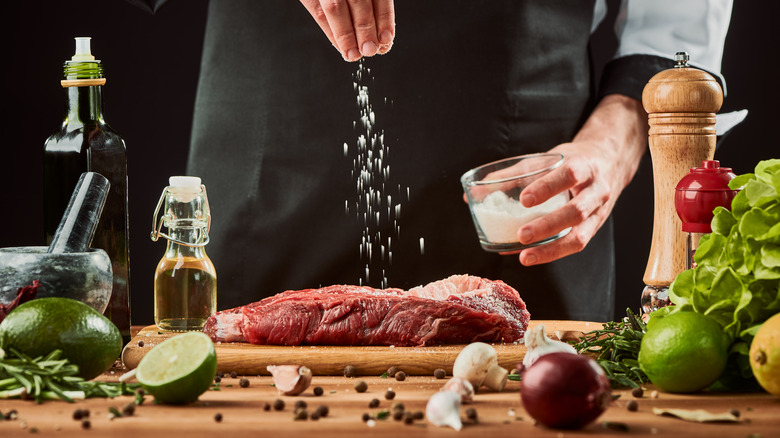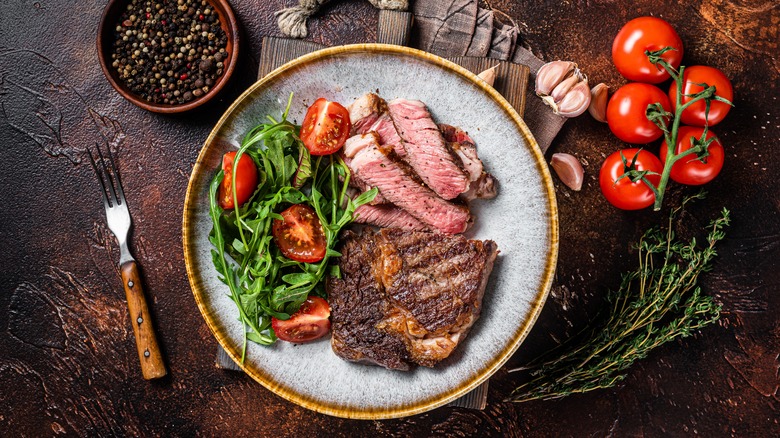Tricks To Make Your Steaks Healthier
Among meat lovers, beef steaks are a must-have. They're an important source of protein and iron for the human body, according to Healthline. Other vitamins and minerals found in beef include zinc, selenium, B12, B6, phosphorus, and niacin (via Healthline). This makes beef a great option to integrate into a healthy diet.
Despite their nutritional benefits, there are various beef steak types such as t-bone, sirloin, ribeye, and fillet. Depending on the cut, the cooking methods vary, which can also affect the quality and health of the meat. A 2022 study published in the International Journal of Environmental Research and Public Health highlighted how various meat cooking methods affect the physicochemical characteristics of steaks.
The taste and consistency of the meat will also depend on the body parts used. For example, the classic fillet steak comes from the area of the inner loin muscles, while t-bone steak is found in the short loin (via Mayo Clinic). If a healthier option is what you're after, it would be best to choose a low-fat, lean cut of beef, such as sirloin, tenderloin, and beef round, according to Cleveland Clinic.
What is the healthiest way to cook a steak?
Whether medium rare or well done, cooked meat comes with individual preferences. However, as meat harbors various types of bacteria, it's best to cook it long enough at the correct temperature to eliminate harmful organisms, per Healthline.
According to Livestrong, pan searing is one option. With this method, the meat is first seared at high heat so that the pores close and no juice escapes. After searing, the temperature is lowered, and the meat is gently cooked to the end. Smaller pieces such as chops, steaks, or medallions can be quickly fried using this method. Larger pieces of meat will require more time accordingly.
With grilling, the meat cooks through intensive heat on charcoal embers or gas cookers. Livestrong advises using a gas grill to alleviate concerns of smoke from charcoal settling on the steak.
Braising is also true magic when cooking meat. With a little patience, tough pieces of raw meat are transformed within a few hours in the cooking pot into butter-soft delicacies. The flank steak or top sirloin steak cuts will benefit from using this method. However, lengthy cooking times might result in losing essential B vitamins when using this method, per Healthline.
Is processed meat healthy?
Despite its nutritional benefits, the possible negative health effects of high meat consumption have been known for a long time. Less well-known, however, is how great the risk of developing certain illnesses is.
A 2020 study published in the International Journal of Epidemiology noted that a higher intake of red meat was associated with an increased risk of colorectal cancer. Healthline states that deep-fried meat has also been linked to high levels of toxic chemicals such as aldehydes. These findings aren't new to the World Health Organization, which has officially classified processed red meat as a Group 1 carcinogen.
Certainly, your entire lifestyle (including exercise and diet) might be decisive for how your health is influenced when eating meat. According to Healthline, meat eaters are less likely to exercise or eat healthily. Nevertheless, when eating processed meat, it's always best to seek advice from a nutritionist or stay within your doctor's recommended daily intake.



